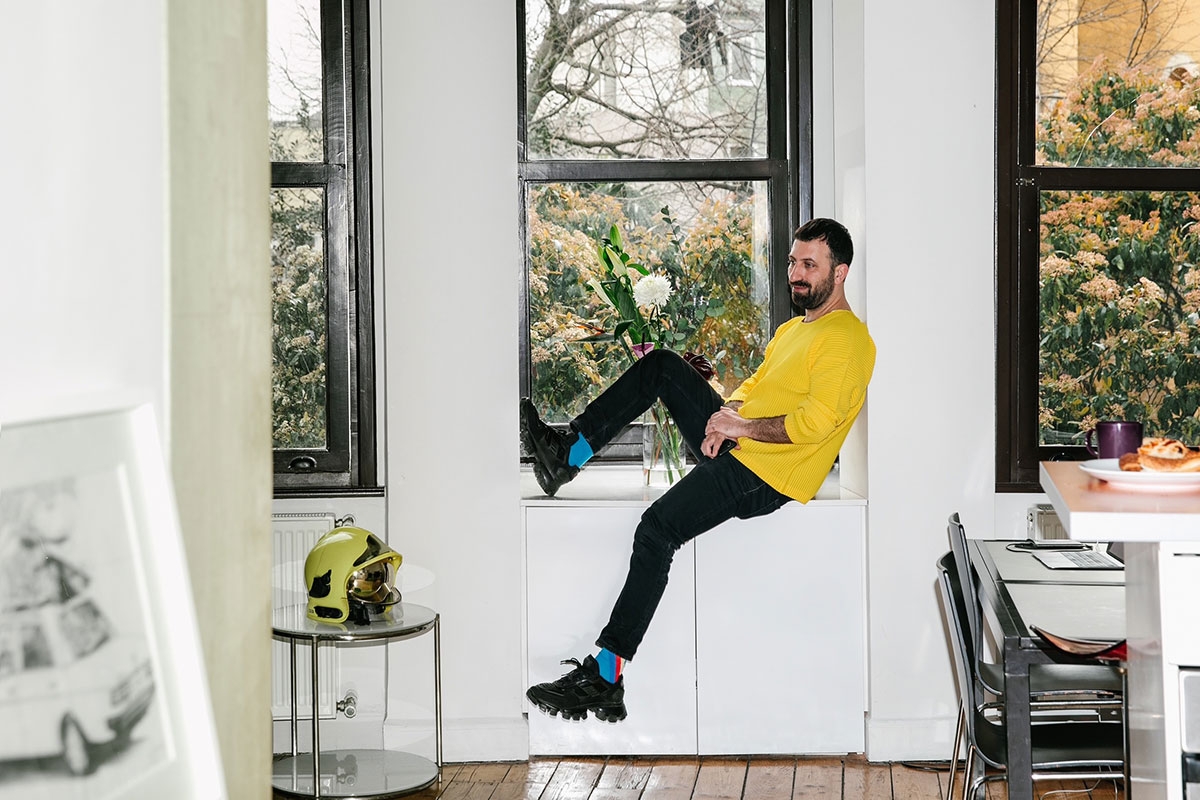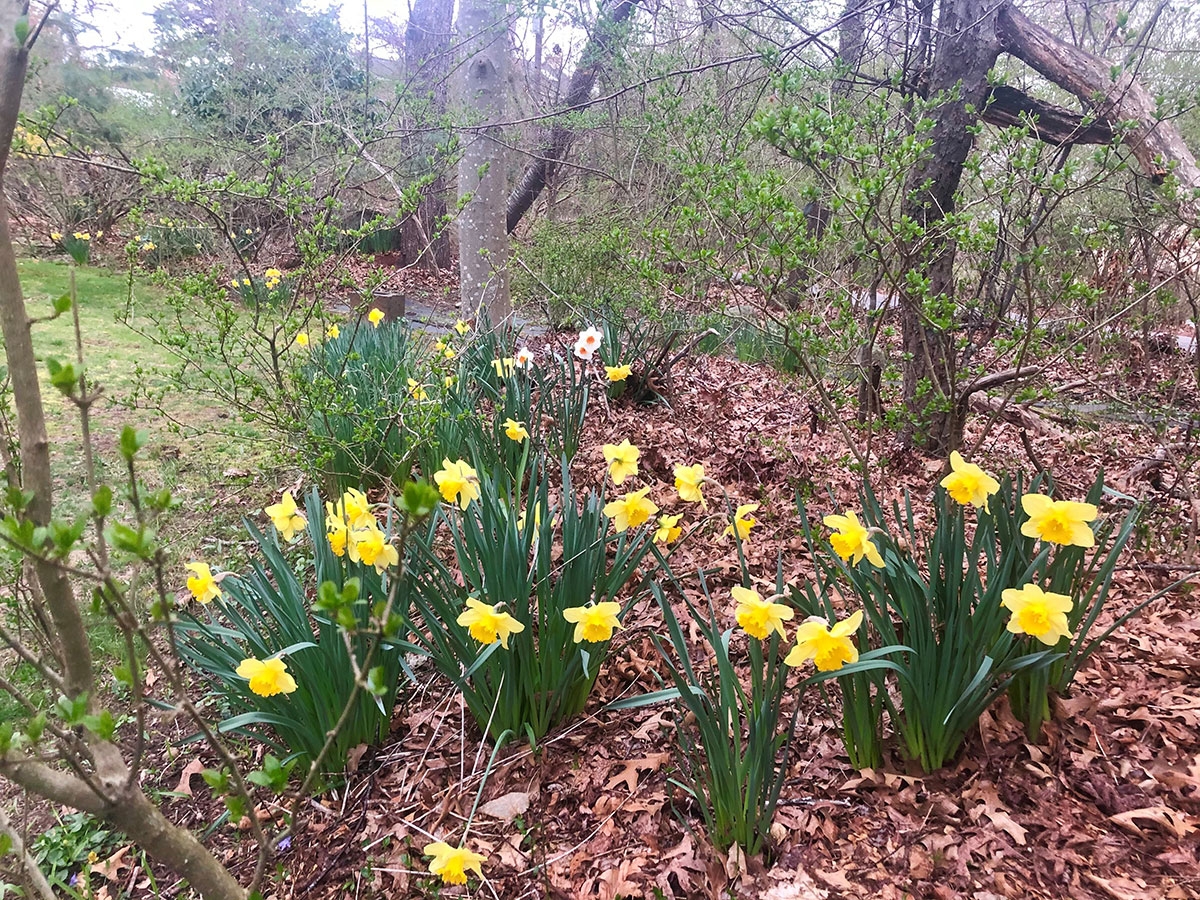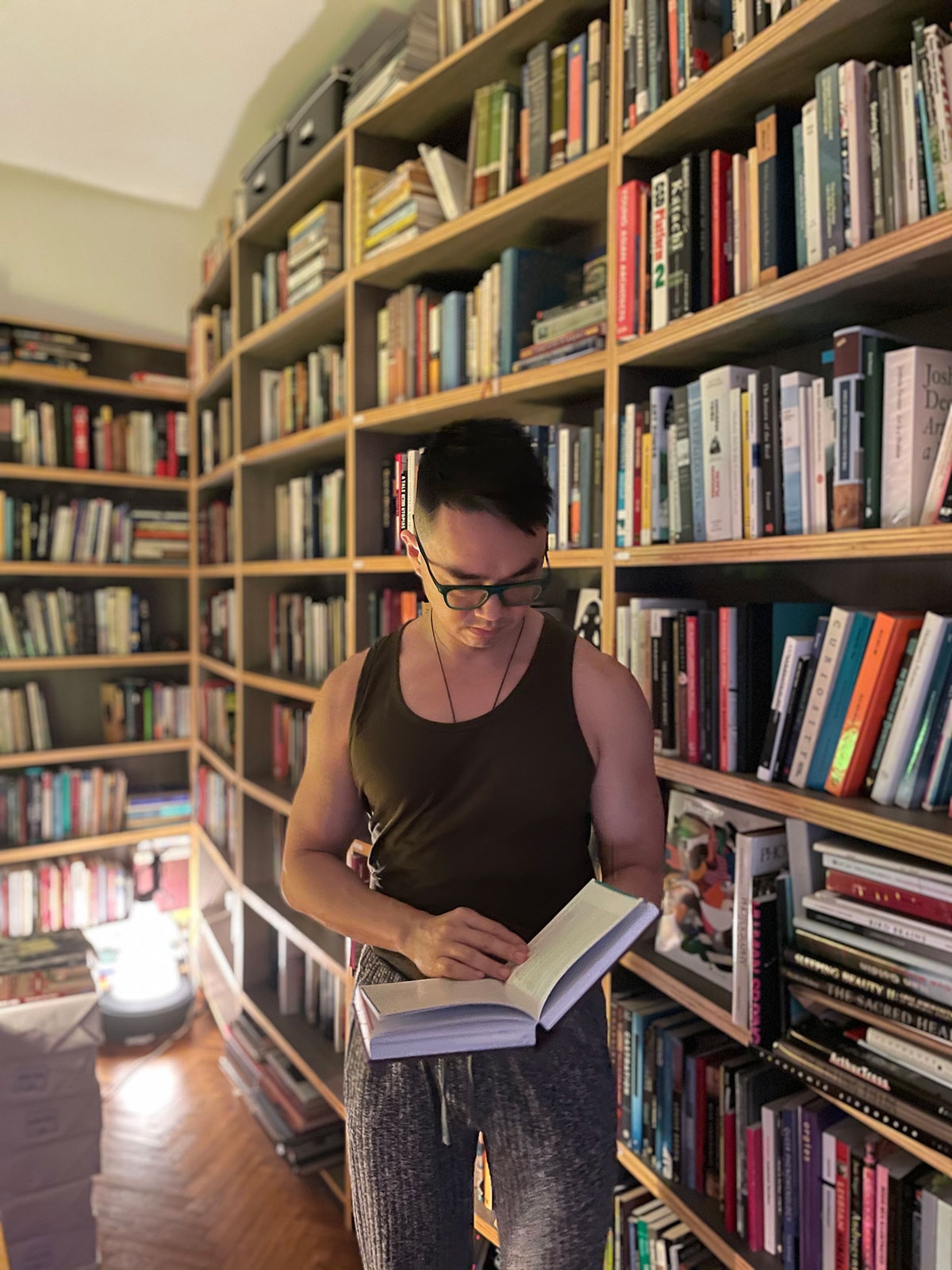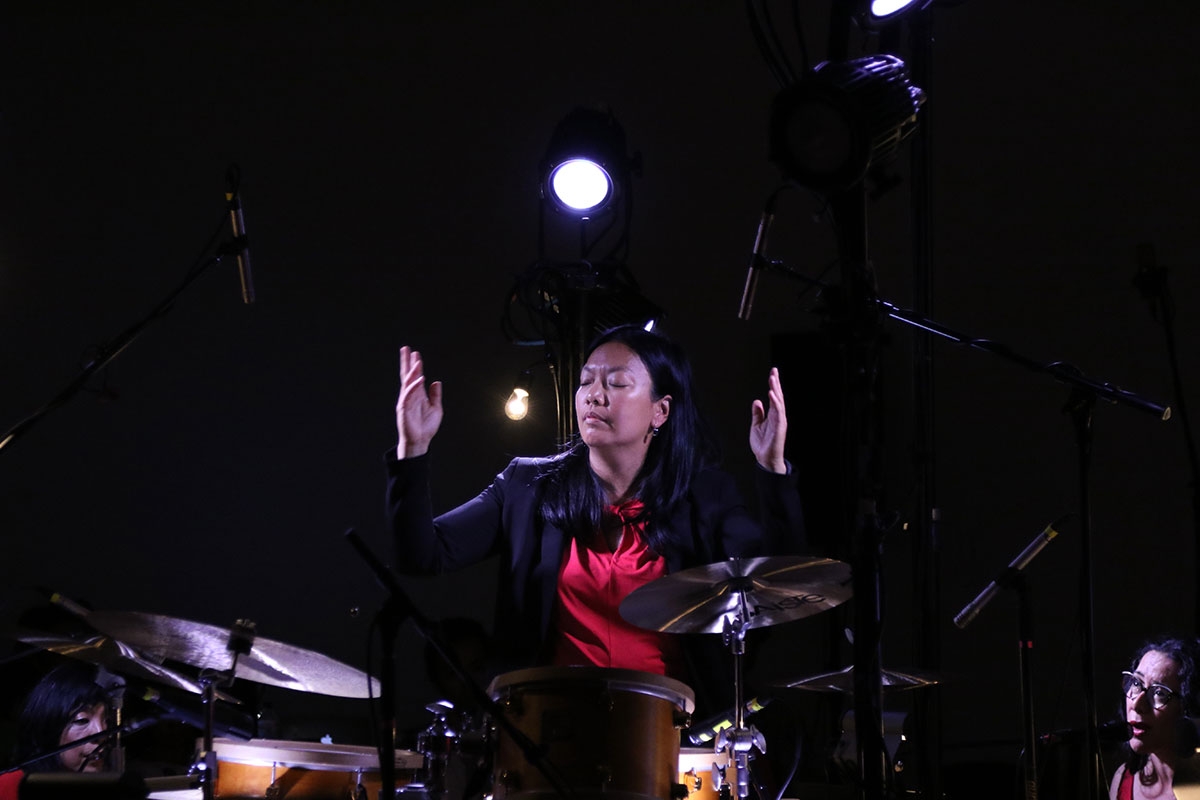-web.jpg)
Photo: Cenicola
-
Photo: Cenicola
Dreaming With: Susie Ibarra
Our Dreaming With Q&A series provides an exclusive glimpse into the artists’ lives and studios.
Where have you spent your time during the pandemic?
I have spent most of my time during the pandemic at home in New Paltz, NY.
What books, music, movies, or podcasts have inspired you recently?
I have been taking in the Counterflows Festival at Home online this April. This festival is on counterflows.com. I have both participated in the festival with a soundscape and podcast on listening to climate change and have been listening to and watching artists’ works such as a podcast by Edward George called Kuduro: Electronic Music of Angola; a [new] film, For Ruth, by Sam Green on the work of composer and sound artist Annea Lockwood; and a film from composer/singer Nakul Krishnamurthy and choreographer Nrithya Pillai called Lalitam Varnnam Asuram. I hope to take in the full festival, which has created this year’s content across publishing, films, podcasts, texts, visuals, and interviews.
I am reading Becoming Wild: How Animal Cultures Raise Families, Create Beauty and Achieve Peace by Carl Safina (Henry Holt and Co., 2020), The Evolution of Beauty by Richard Prum (Doubleday, 2017), and Hungry Listening: Resonant Theory for Indigenous Sound Studies by Dylan Robinson (University of Minnesota Press, 2020).
I have been listening recently to Ryuichi Sakamoto, Richard Reed Parry, Pauline Oliveros, Tania Leon, Mavis Staples, Kim So Ra, Kaoru Watanabe, Somi, Milton Nascimento, Annea Lockwood, Claire Chase, Kaija Saariaho, Tyshawn Sorey, Maria Grand, Madame Gandhi, Lea Bertucci, Laurie Anderson, Yuka Honda, and Milford Graves. These are a few musicians that I have been listening to just recently.
What are you working on right now?
On June 17th we will premiere for the Asia Society Triennial Fragility Etudes, a film of music performances that studies polyrhythms for soloists and ensemble. These musical studies were first inspired by glass physics and the equation and rate of fragility—glass transitioning from liquid to solid and vice versa. It is metaphorically like stars in the universe which, in a stellar explosion, become supernovas. Once cool, they can collapse into a neutron star or a black hole. The polyrhythms are similar to the moments in between that play a delicate balance in the equation and determine direction and result. I think about how these concepts inform how we move in our daily lives and the polyrhythms that inform our directions and results. These studies are written to be performed as game pieces both for ensemble and solo. With support from MASS MoCA North Adams, MA, I am in residence to film this work at the museum. I have invited multimedia artist Yuka C. Honda to direct the film.
What artist or work of art has most recently had an impact on you?
Milford Graves, A Mind-Body Deal, 2020
Blane De St. Croix, How to Move a Landscape, 2021
Nicholas Galanin, Never Forget, 2021, and more works
Christine Sun Kim, Shoegazing, 2020; Stacking Traumas, 2020; and more works
Makoto Fujimura, Walking on Water, 2020–21
Pauline Oliveros, Anthology of Text Scores, 2016
What are you most looking forward to in 2021?
I was so grateful to be able to see my parents in 2021, as it had been over fifteen months during this pandemic that I was not able to see them. I am looking forward to seeing them again with my son. I am looking forward to my first in-person, live performance since the pandemic! I miss this very much and I miss attending live performances, too.
What do you want viewers to take away from experiencing your work in the Triennial?
In Fragility Etudes we are playing a game where the score and conduction invite the players to make musical choices and enter the space and navigate sound together and alone. The film invites the viewer and listener to transport into a dream of experiencing this music and playfulness.
Enjoy the experience and perhaps you may find yourself walking away playing a rhythm or more present as your body is playing these rhythms in space, in time, and in relation to others.
Are there any fun facts about your practice or your work in the Triennial that you would like to share with readers?
Fun fact: my dog, Appa, who is a Japanese Akita, loves drums. She especially loves cymbals and sometimes when I am practicing and am playing cymbals she will walk into the room and howl.



